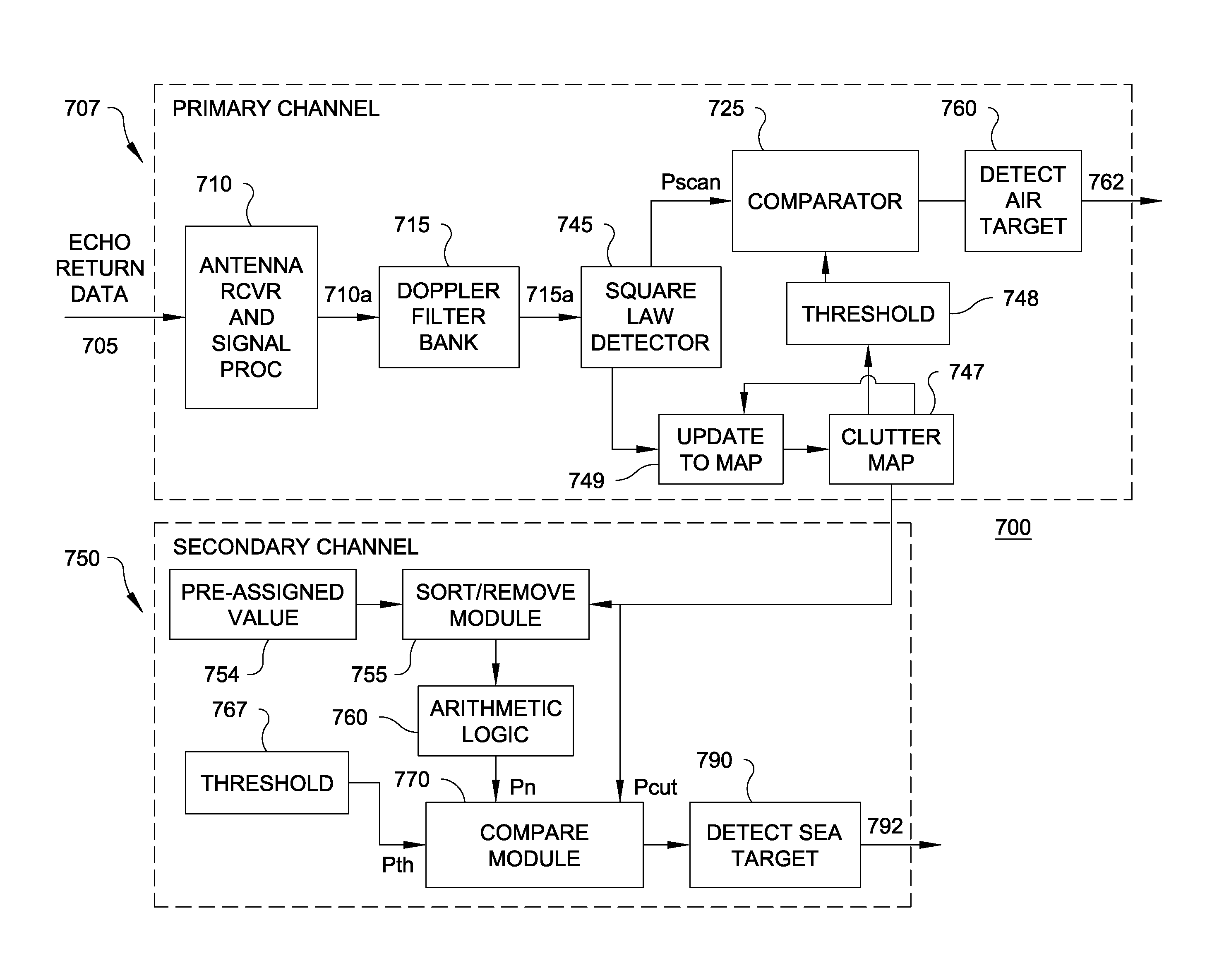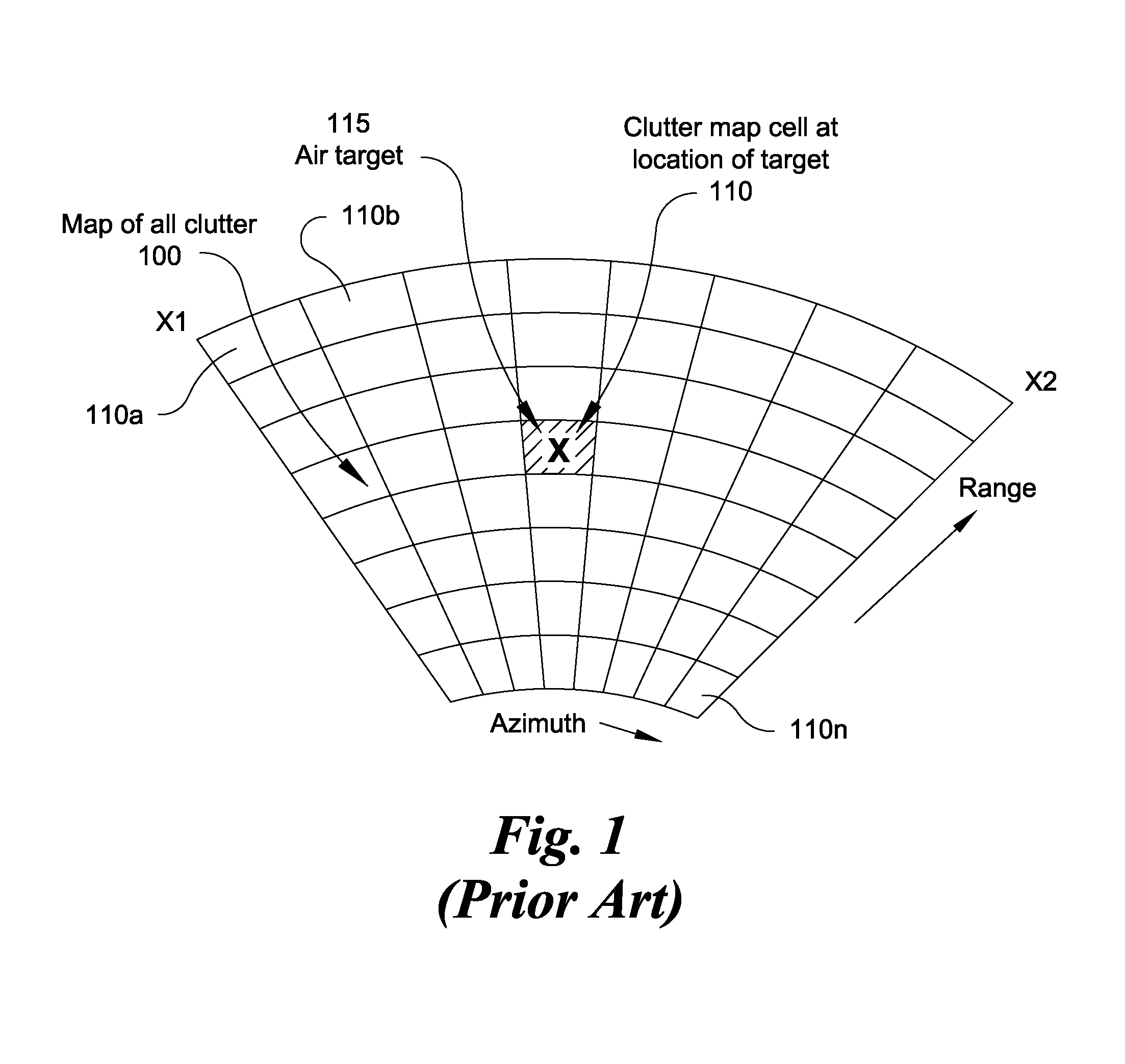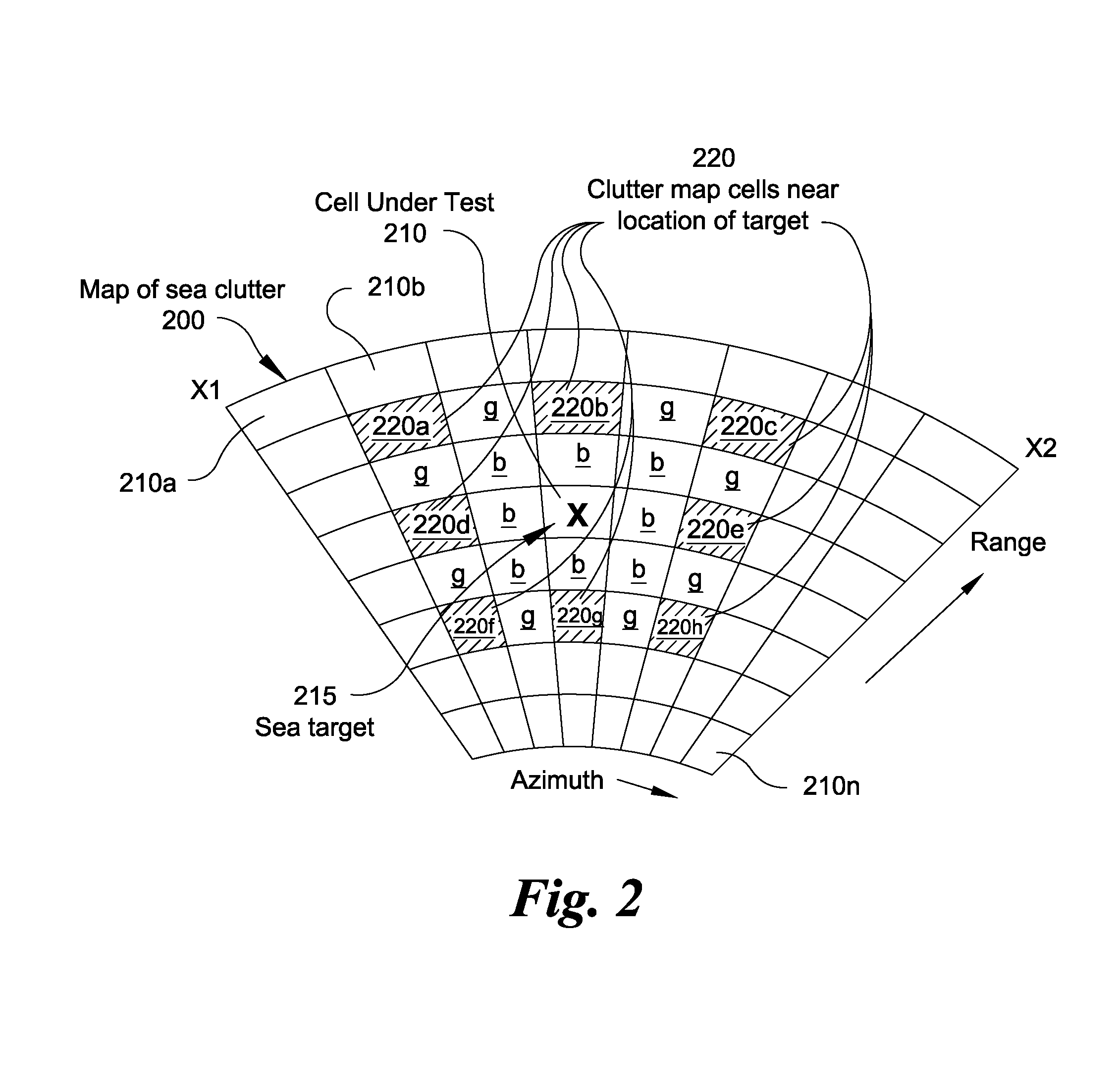Method and apparatus for radar surveillance and detection of sea targets
a radar and target detection technology, applied in the field of sea target detection, can solve the problems of unable to detect hovering craft, most sea targets, and small cells, and achieve the effect of preventing biasing the detection
- Summary
- Abstract
- Description
- Claims
- Application Information
AI Technical Summary
Benefits of technology
Problems solved by technology
Method used
Image
Examples
Embodiment Construction
[0015]The following description of the preferred embodiments is merely by way of example and is not intended to limit the invention or its application. The subject invention allows a conventional air target surveillance radar using prior art map based CFAR detection system to further detect slow or stationary targets on or hovering above a homogeneous surface such as a body of water. While preferred embodiments of the present invention are described with respect to slow or stationary targets on or hovering above the sea surface (sea targets), the present invention contemplates that sea targets further include those slow moving, non-moving and hovering targets on or above other homogeneous surfaces such as homogeneous desert sands, frozen Antarctic terrain or frozen water, and the like. Furthermore, while slow moving targets as described herein are typically surface craft, buoys, hovering helicopters, growler icebergs, periscopes and the like, it is further contemplated that targets ...
PUM
 Login to View More
Login to View More Abstract
Description
Claims
Application Information
 Login to View More
Login to View More - R&D
- Intellectual Property
- Life Sciences
- Materials
- Tech Scout
- Unparalleled Data Quality
- Higher Quality Content
- 60% Fewer Hallucinations
Browse by: Latest US Patents, China's latest patents, Technical Efficacy Thesaurus, Application Domain, Technology Topic, Popular Technical Reports.
© 2025 PatSnap. All rights reserved.Legal|Privacy policy|Modern Slavery Act Transparency Statement|Sitemap|About US| Contact US: help@patsnap.com



